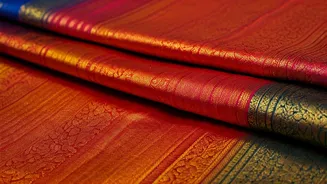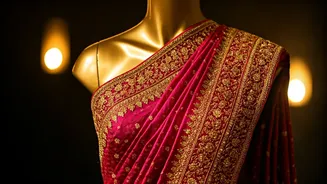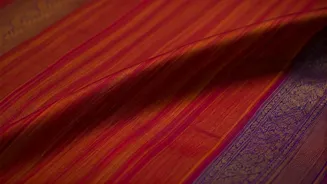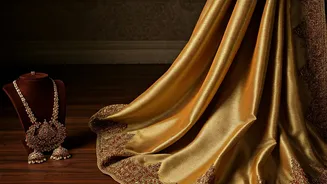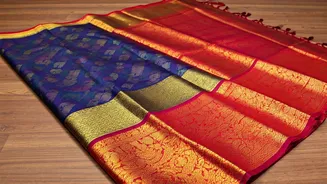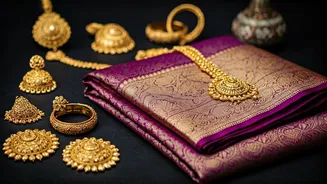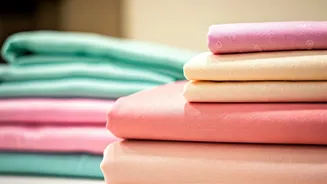Fabric and Texture
Authentic Kanjivaram silk sarees are easily identified by their distinct fabric characteristics. The initial assessment starts with the touch. Genuine
silk possesses a unique feel—a smooth, slightly cool sensation. Examine the weave closely, looking for a dense construction. This dense weave contributes to the saree's durability and weight, a signature of quality. The fabric should drape gracefully, not stiffly or loosely. Furthermore, a gentle crease test can reveal much; the fabric should hold its shape and not easily wrinkle excessively. This careful evaluation of the fabric texture is fundamental in discerning the authenticity of a Kanjivaram silk saree.
Border: Zari Threading
The border of a Kanjivaram saree is an integral part of its identity, making a careful examination of the zari threading essential. Pure zari is made from gold or silver threads, which lend a distinctive sheen and weight to the border. Inspect the threading closely to ensure its quality. Look for a smooth, even texture without any loose threads or imperfections. High-quality zari will retain its luster over time, not tarnishing or fading easily. Furthermore, examine the border's attachment to the main fabric. A well-crafted saree will have a seamless integration, showing skillful weaving. These detailed observations of the zari threading can provide invaluable insight into the authenticity and craftsmanship of the Kanjivaram silk saree.
Colors and Patterns
The vivid colors and intricate patterns of Kanjivaram sarees are key identifiers. Genuine Kanjivaram sarees showcase rich, vibrant colors that are dyed using traditional methods. Inspect the color consistency across the entire fabric, ensuring there are no uneven patches or bleeding. The patterns, whether geometric or inspired by nature, are meticulously woven, resulting in a design that is clear and well-defined. Examine the details of the motifs, such as the precision of the lines and the neatness of the edges. Authentic sarees often feature complex designs that demonstrate the weaver’s skill. Additionally, consider the color combinations. Classic Kanjivaram sarees often combine contrasting or complementary colors in a harmonious way. Pay close attention to these elements to determine the authenticity of a Kanjivaram silk saree.
The Pallu's Elegance
The pallu, or the end piece of the saree, is often the most elaborate part, revealing the artistry and authenticity of the Kanjivaram. The pallu showcases the most complex and detailed designs, making it a focal point. Carefully examine the intricate weaving patterns and the quality of the zari work. The designs found on the pallu often tell a story or represent traditional motifs, highlighting the saree's cultural significance. A notable feature to assess is the density of the weaving. Authentic pallus typically have a close weave, providing a luxurious feel and appearance. Moreover, a simple test is to gently twist the pallu. It should maintain its shape without excessive creasing. The pallu, with its elaborate detailing and impeccable craftsmanship, is a key indicator of a genuine Kanjivaram silk saree.
Trademark Verification
Lastly, the presence of the 'Kanjivaram' trademark is a critical factor in verifying authenticity. Many genuine Kanjivaram sarees are marked with a specific trademark, usually woven into the fabric itself. This trademark acts as a seal of quality, assuring that the saree is a product of traditional Kanjivaram weaving. Look closely at the saree for any distinctive labels or tags. The trademark should be neatly and clearly displayed, often in a specific location on the saree. Be aware of the placement and look of the trademark as this can vary. Counterfeit sarees may attempt to mimic the trademark, but usually the details are inconsistent. By confirming the presence and inspecting the quality of the trademark, you can be more certain of acquiring an authentic Kanjivaram silk saree.
